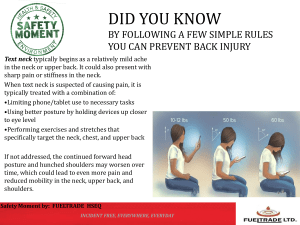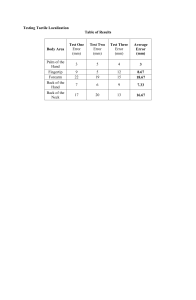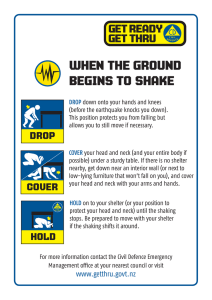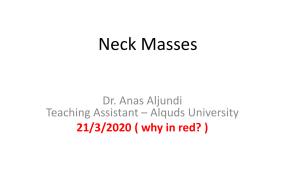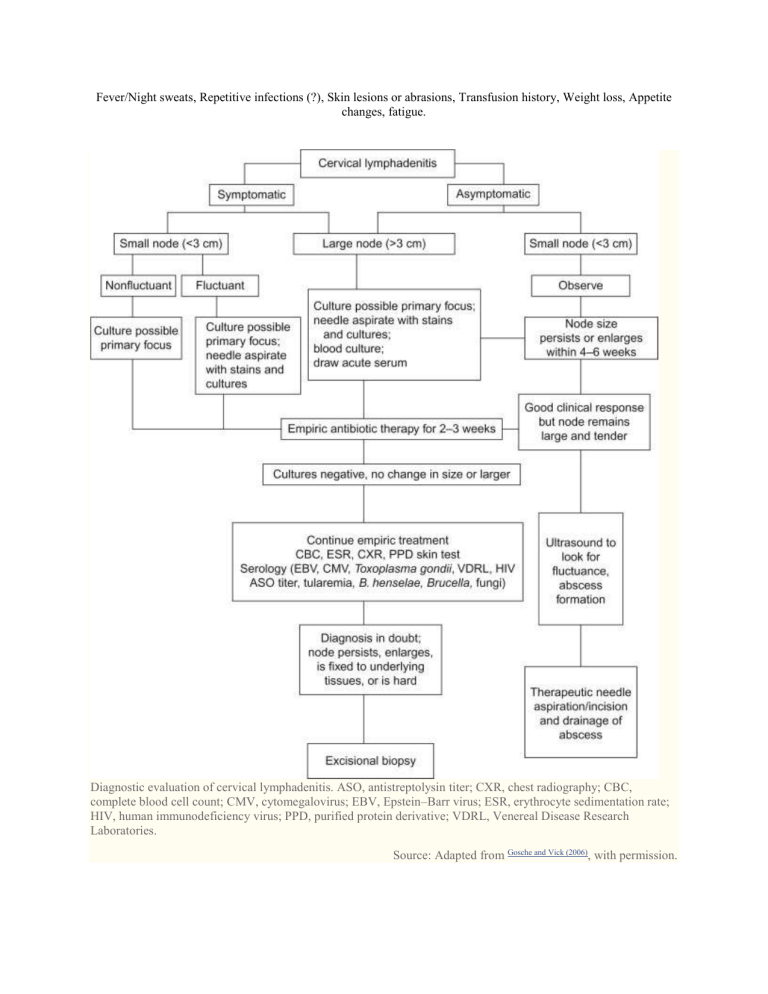
Fever/Night sweats, Repetitive infections (?), Skin lesions or abrasions, Transfusion history, Weight loss, Appetite changes, fatigue. Diagnostic evaluation of cervical lymphadenitis. ASO, antistreptolysin titer; CXR, chest radiography; CBC, complete blood cell count; CMV, cytomegalovirus; EBV, Epstein–Barr virus; ESR, erythrocyte sedimentation rate; HIV, human immunodeficiency virus; PPD, purified protein derivative; VDRL, Venereal Disease Research Laboratories. Source: Adapted from Gosche and Vick (2006), with permission. • Ultrasonography is useful in an acute setting in assessing whether a swelling is nodal in origin, an infected cyst or other soft tissue mass. It may detect an abscess requiring drainage. • Lymph node biopsy is indicated if: • Initial physical examination and history suggest malignancy. • Lymph node size is greater than 2.5 cm in absence of signs of infection. • Lymph node persists or enlarges. • Appropriate antibiotics fail to shrink node within 2 weeks. • Supraclavicular adenopathy SORT: KEY RECOMMENDATIONS FOR PRACTICE EVIDENCE RATING CLINICAL RECOMMENDATION A persistent neck mass in an adult older than 40 years should REFERENCES C 1, 6, 8, 10 C 20 C 7, 13, 14, 21 prompt a search for a malignant source. Contrast-enhanced computed tomography is the initial diagnostic test of choice in an adult with a persistent neck mass. Fine-needle aspiration biopsy is an effective tool to determine the etiology of a neck mass. A = consistent, good-quality patient-oriented evidence; B = inconsistent or limited-quality patient-oriented evidence; C = consensus, disease-oriented evidence, usual practice, expert opinion, or case series. For information about the SORT evidence rating system, go to https://www.aafp.org/afpsort. Table 3. Preferred Imaging Modalities for Neck Masses or Adenopathy in Adults SCENARIO Nonpulsatile solitary mass or multiple neck masses RECOMMENDED TEST Contrast-enhanced CT COMMENTS — SCENARIO Pulsatile neck mass RECOMMENDED TEST COMMENTS Contrast-enhanced CT and contrast- May be performed at the same enhanced CT angiography time Patient with a neck mass and Contrast-enhanced CT or CT with Positron emission tomography is history of cancer treatment positron emission tomography superior in this subset of patien The clinician may proceed with FNAB, if indicated, once appropriate imaging has ruled out involvement of underlying vital structures. FNAB can provide further information through cytology, Gram stain, and bacterial and acid-fast bacilli cultures while avoiding complications of open biopsy. The sensitivity of FNAB for detecting a malignancy ranges from 77% to 97%, and the specificity ranges from 93% to 100%.7,13,14,21 FNAB should never be performed on a pulsatile mass or a mass that appears to be vascular in origin. Patients with suspected infectious and inflammatory masses should be tested for HIV, Epstein-Barr virus, cytomegalovirus, toxoplasmosis, tuberculosis, and B. henselae, when clinically appropriate. Endocrine masses can be assessed further with blood work, including thyroid and parathyroid hormone panels.

